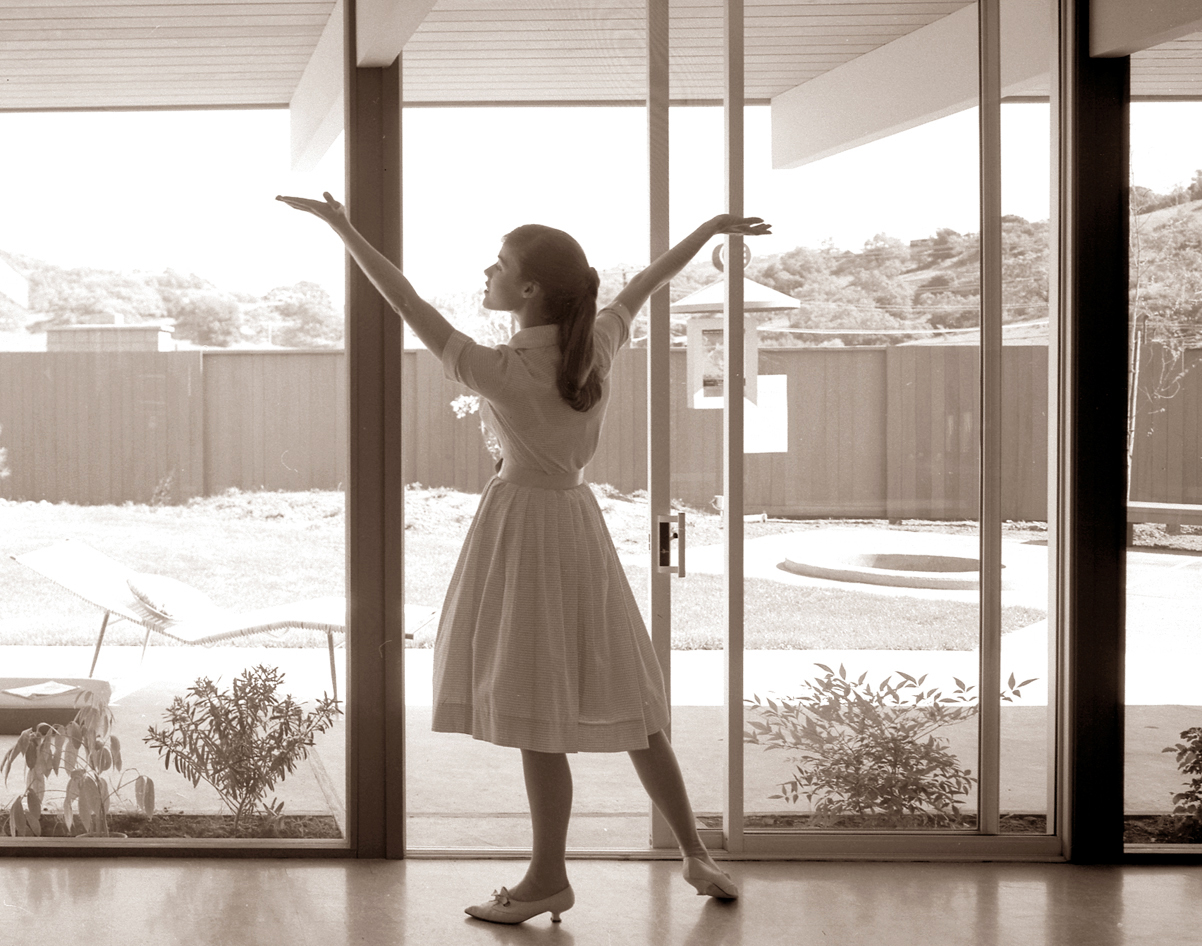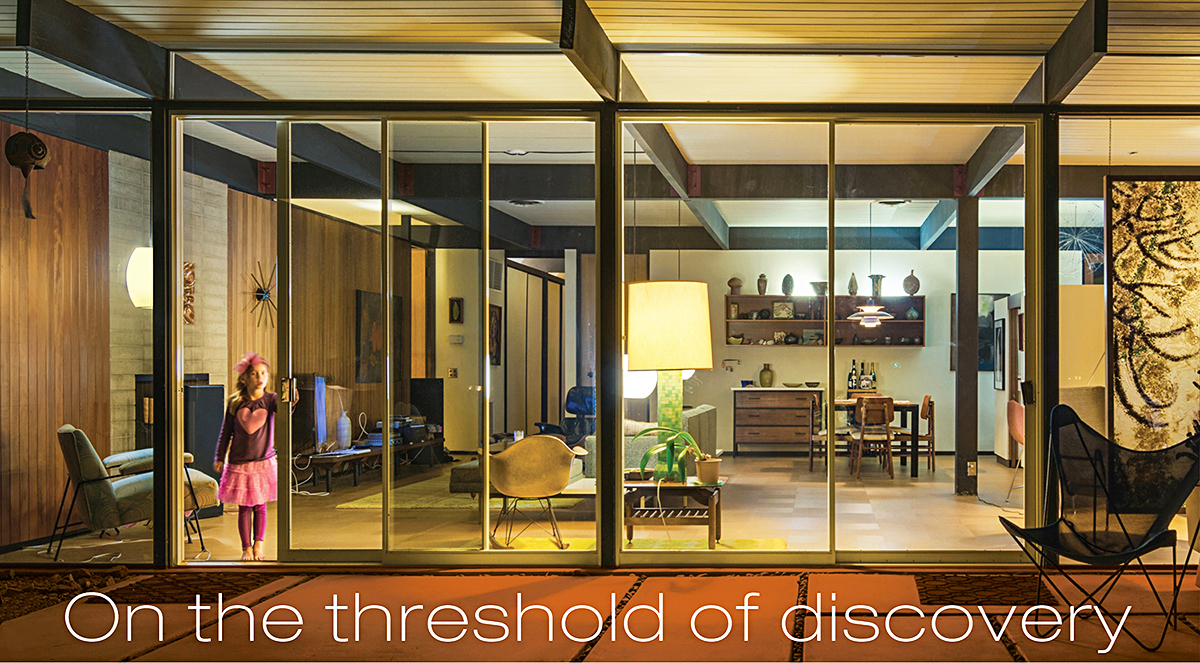Rise of the Aluminum Slider
 |
|
|
If the 1967 film classic 'The Graduate' had been set in time 14 years earlier, one could imagine its young protagonist lurching through a wood-framed sliding-glass door before diving into the backyard pool. And when a family friend leans in at a party to tell him the fast track to success, the word he utters gravely might well have been "aluminum."
Aluminum was, in some ways, the plastic of the early '50s. The important role it played in the development of mid-century modern housing was to replace the wood doorframe with a truly modern, lightweight one, making possible the resounding popularity of sliding-glass doors.
This is the transformation chronicled in 'On the Threshold of Discovery,' Features Editor Dave Weinstein's history of the sliding door featured in the new Summer 2015 issue of CA-Modern magazine.
With input from two sons of modernist architect Richard Neutra and numerous experts, Weinstein traces its roots in the Japanese shoji screen and it evolution through wood and steel frames to the more popular and functional aluminum models.
 |
|
|
"Up until the mid-1940s, metal and sliding-glass doors were hung from barn door-like wheels and tracks," says Raymond Neutra, who has been researching the topic. "My dad is the person who kept publicizing this device as something important. I'm pretty sure he was one of the main architects who asked manufacturers to fabricate these doors."
Perhaps so, but as the story documents, pioneer modernists like Rudolph Schindler, Mies van der Rohe, and Le Corbusier had been experimenting with their predecessors in the '20s and '30s.
"The first examples were usually custom-designed and became key features of modern houses, capturing the new 'machine age' spirit of the early 20th century," observes architectural historian Dan Gregory in his online blog, 'Eye on Design.'




